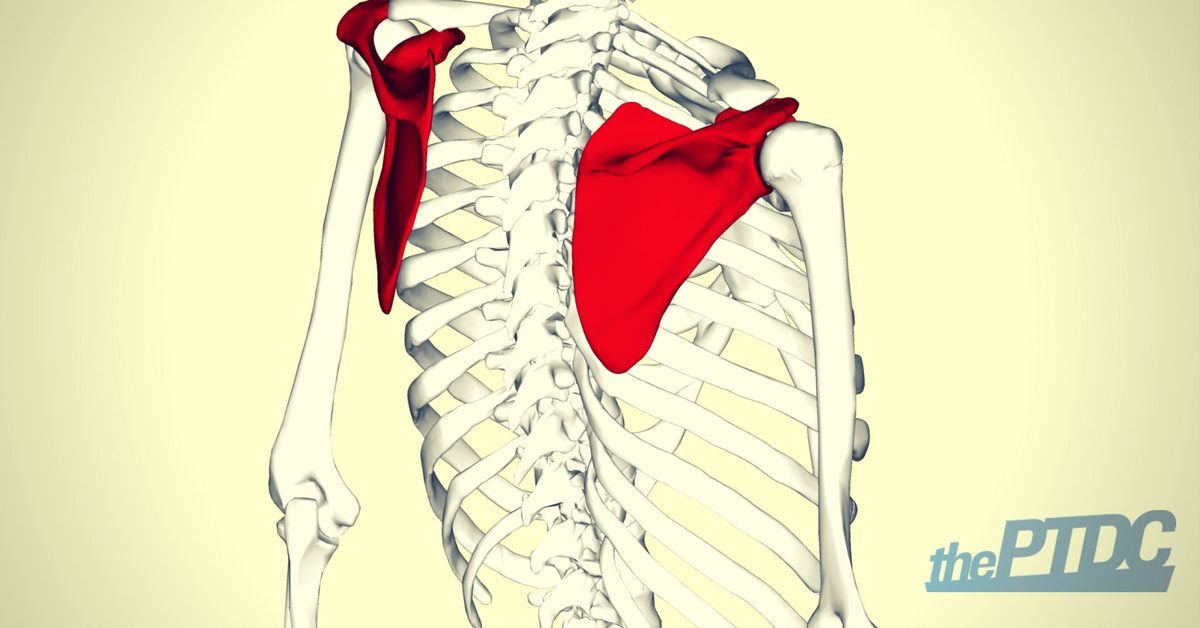With the help of science, we are able to better understand how our cells help us lift heavy things and what to eat to help us maximize our potential for muscle growth, just to name a few examples. There is, however, one thing that even the brightest scientific minds may just never understand: why people all over the world seem to be drawn to the bench press.
For some, it may be a way for them to attract the object of their desire. For others, it may be about hitting big numbers and feeding the ego. Whatever the case, we as coaches understand that a strong bench press isn't possible without proper scapular stability (at least without injury).
Teaching your clients scapular stabilization exercises can be difficult, however. They often have a hard time imagining what that even feels or looks like. Simply telling them to "squeeze their shoulder blades" isn't always helpful. So let's try something different: a small activation drill for your client's scapulae.
Enter the band lat pull-down.
We know that the key to keeping our clients safe and injury-free when performing a bench press (and get strong) is to have very solid tension in the upper torso. That's where this drill comes in handy. In fact, it'll even help the most trained individuals understand true scapulae activation.
This drill will allow your clients to understand how to turn their attention for optimal tension in the right places, including their glutes and anterior core, while keeping the arm free to move the bar.
I have found this exercise to work great for the lats with people that just don't seem to "get" what they should be doing to maintain tension and stability within the upper thoracic region, and helps them to learn better overall awareness, rather than just simply telling them to "keep your shoulders back and down" during pressing exercises.
The added benefit of this is that it can carry over to many other exercises, including the deadlift, the chin-up, and even farmer carries--basically, any exercise that requires the right amount of tension and muscle recruitment at the right times.
Using the right cues for this drill.
There's never a perfect cue for teaching a particular movement or drill that'll work for everyone. But that doesn't mean cues are useless, just that there may be a little more personalization involved to find the right ones for certain people.
I've found success with teaching someone a new skill or habit by first getting them to be aware of the specific spots on the body that I'm referring to. This can be done by literally pointing to the spot, squeezing the spot (though be sure to ask if the client is okay with you touching him or her), or explaining what I want the client to be doing with as little jargon as possible.
For example, to help create optimal upper body tension for the bench press, I want them to focus on the lats. Most people, however, don't know how to activate them or may not even know they exist. We can first try to point out the area. Then we can tell them to squeeze their opposite hand in their armpit, where they should be able to "feel" their lats. This works wonders for certain people.
Let's take that a little further.
Once you have your clients doing the band lat pull-down, you can progress them into exercises that restrict their range of motion, while also pushing towards understanding what needs to be required to perform a chest press exercise.
Such as dumbbell floor presses.
Following this, you can then progress them to alternating dumbbell chest presses to step things up a bit.
These are great exercises to do before having them do the more traditional bench press. With each exercise, be sure to providing general feedback, such as "keep the lats on" or "keep the armpits tight", referring back to the drill at the beginning of this article. Doing so, will provide a greater chance for your clients to completely understand the importance of creating and maintaining a stable foundation within the upper torso.
More importantly, they'll know how.
As a general guideline, have them stick to the drill and exercises for 3-4 weeks before progressing. This, I believe, will give them enough time to be able to wrap their heads around scapular stability.
Although, even after this window of time, you shouldn't just discard the drill. Your aim is to utilize it, give your clients optimal awareness of scapular stability, and eventually allow them to fly free from the nest and perform the bench press (and bench big) on their own.
Other trainers found these articles helpful:
- Here's What a Good Core Workout Actually Looks Like by Mike Sheridan
- How to Properly Program For a Client With Shin Splints by Daryl Stubbs
- Are Your Client's Injuries Hurting Your Paycheck? by Jonathan Goodman










